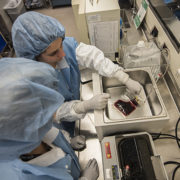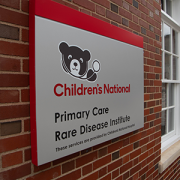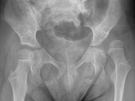Study with largest cohort in the Western world sheds light on Epstein-Barr virus

Epstein-Barr virus is a member of the herpes family and it spreads primarily through saliva.
Children’s National Hospital experts provided a contemporary description of the epidemiology, clinical presentation and management of chronic active Epstein-Barr virus (CAEBV), shedding light on this very rare disease. The paper, published in Blood Advances, assessed 57 patients outside of Asia — the biggest international retrospective cohort study published in the Western world.
Epstein-Barr virus is a member of the herpes family and it spreads primarily through saliva. Once a person is infected with Epstein-Barr virus, the immune system will control the infections, but the virus lies in a dormant state in the patient’s B Cells. However, in some patients, there is a failure of the body to control the infection, and the virus is found inside the patient’s T and/or NK cells. These rare patients are diagnosed with CAEBV. The hallmark of the disease is proliferation of Epstein-Barr virus-infected T or NK cells that infiltrate tissues, leading to end-organ damage. Patients most often experience fevers, hepatosplenomegaly, liver inflammation, cytopenias and lymphoproliferation that may progress to lymphoma.
Given it is most prevalent in Asia, little is known about the disease in the Western world. There has only been one published paper regarding the outcomes of patients in the U.S., which included 19 patients amassed over 28 years, and was published a decade ago.
Multiple treatments have been attempted to control the disease, but none have resulted in consistent remission. Historically, the consensus is to use steroids and/or antiviral drug in combination with proteasome inhibitor agents. In some cases, clinicians also use cytotoxic chemotherapy to reduce disease burden and improve the patient’s condition before HSCT. Still, this approach is limited because most patients die due to the progression of their disease despite these interventions.
Ultimately, most of these patients are referred for allogeneic hematopoietic stem cell transplantation (HSCT), which is the only known curative therapy for CAEBV. However, the best approach to control disease prior to HSCT, as well as the optimal conditioning regimen, are unknown.
“For the first time in many years, we provide insight on contemporary treatment options to consider for patients with CAEBV, as well as identifying risk factors for worse outcomes,” said Blachy Dávila Saldaña, M.D., blood and marrow transplant specialist at Children’s National and lead author of the study. “HSCT is curative, but patients need to be considered prior to the evolution of more advanced disease, particularly lymphoma. We also provide a new platform that will inform research on new interventions and therapies for this population.”
“CAEBV remains a challenging disorder to treat, especially once severe complications develop,” said Catherine Bollard, M.D., M.B.Ch.B., director of the Center for Cancer and Immunology Research at Children’s National. “However, our data suggests that T cell modulating therapies may enhance disease control, and future studies should address this question in a controlled setting.”
Future steps also include performing genetic studies to identify those at risk of developing the disease, and developing new platforms for treatment, including checkpoint inhibitors and cytotoxic lymphocyte therapies (CTL’s), which is a form of adoptive immunotherapy that employs virus-specific T cells.
The cohort includes patients treated in CNH and multiple institutions around the world, including Texas Children’s and the National Institutes of Health. “This work was only possible through our collaborative research in anti-EBV cellular therapies,” said Dr. Dávila.











